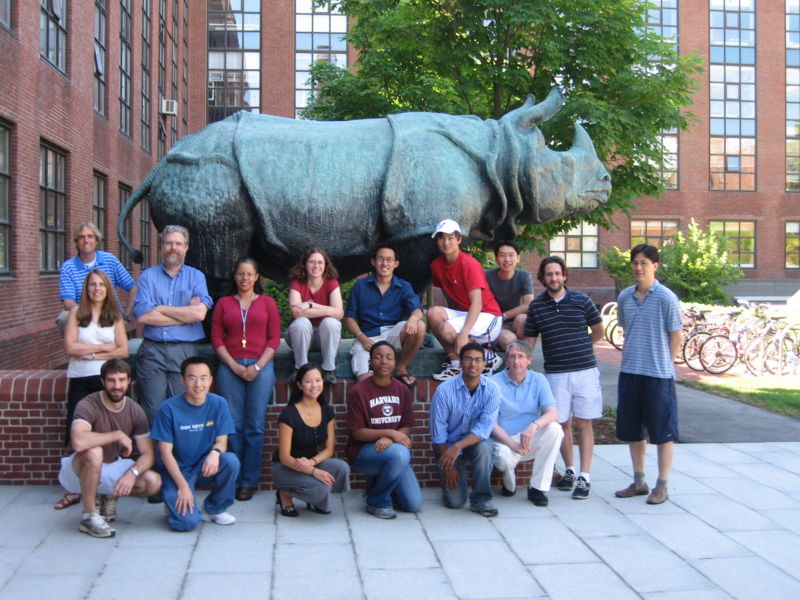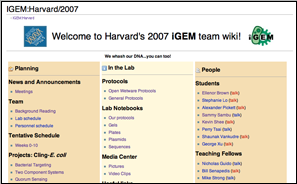Harvard
From 2007.igem.org
(→The Harvard University 2007 iGEM Team) |
(→Bacterial Targeting) |
||
| Line 44: | Line 44: | ||
==Bacterial Targeting== | ==Bacterial Targeting== | ||
| - | + | The motivation for this part of the project was two-fold: first, to make bacteria adhere to targets with a high degree of specificity, and second, to transduce a signal upon adhesion to their targets. Initial targeting screens were done with histidine and strep2 tags to their known nickel and streptavidin targets; after characterization and high enrichment with these known substrates, random libraries were inserted into the outer membrane proteins OmpA and AIDA. As we proceed with this experiment, we hope to characterize sequences that lend specificity to calmodulin and EGF. | |
| - | + | ||
| - | + | ||
| - | + | ||
==Quorum Sensing== | ==Quorum Sensing== | ||
Revision as of 15:41, 23 August 2007
| Harvard University 2007 iGEM Team | ||
Students
Education Advisor
|
Teaching Fellows
Faculty Advisors
| |
The Harvard University 2007 iGEM Team
This year Harvard's team consisted of 8 undergraduate students, with backgrounds in molecular and cellular biology, biochemistry, and computer science. With the help of 6 faculty advisers and 4 teaching fellows, plus one education advisor, they devised and executed a single project with three subsections.
Cling-E. Coli
- Bacterial Targeting
- Quorum Sensing
- Two-Component Systems
Bacterial Targeting
The motivation for this part of the project was two-fold: first, to make bacteria adhere to targets with a high degree of specificity, and second, to transduce a signal upon adhesion to their targets. Initial targeting screens were done with histidine and strep2 tags to their known nickel and streptavidin targets; after characterization and high enrichment with these known substrates, random libraries were inserted into the outer membrane proteins OmpA and AIDA. As we proceed with this experiment, we hope to characterize sequences that lend specificity to calmodulin and EGF.
Quorum Sensing
Two-Component Systems
Click the picture, or click [http://openwetware.org/wiki/IGEM:Harvard here] for the more detailed Harvard iGEM 2007 wiki.

